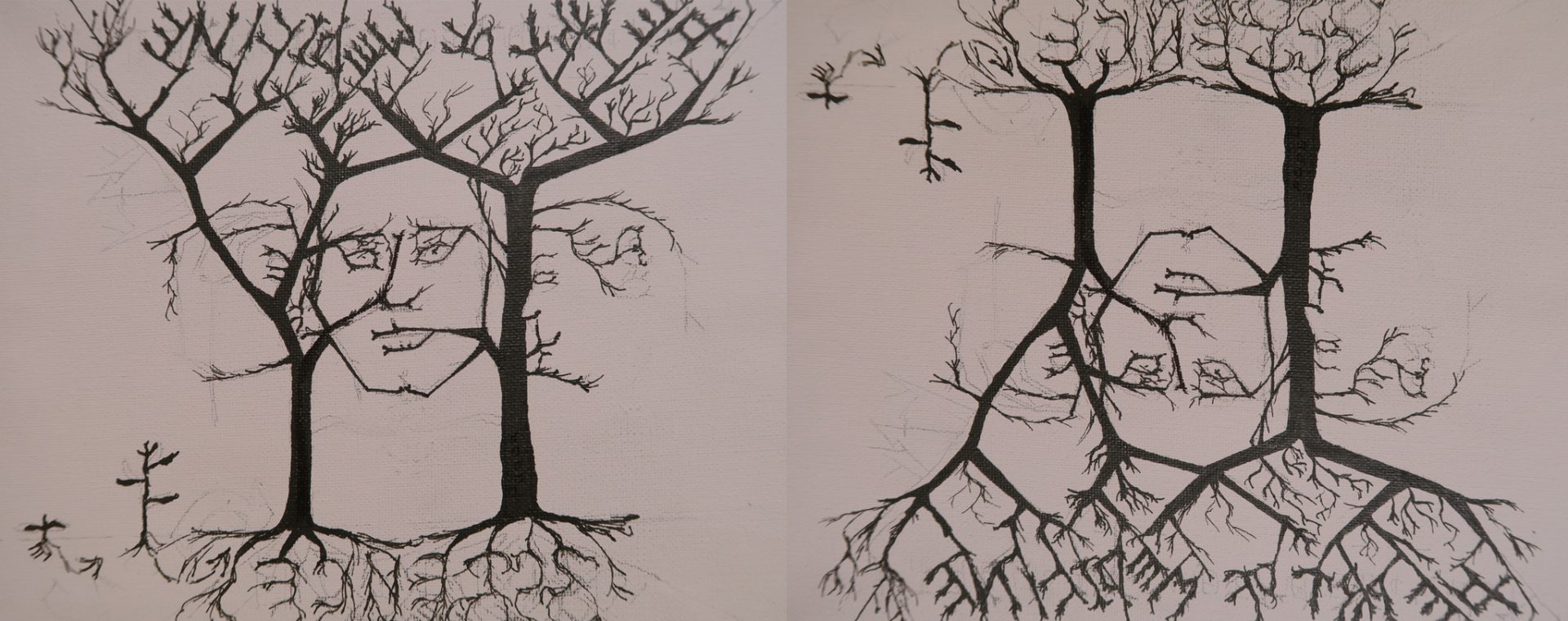The Art of Medicine
Perception Sometimes diagnosing a patient can be difficult and will require a different perspective. For example, an elderly woman may need to be spoken differently in comparison to communicating with a child. To incorporate this idea into my artwork I have hidden the words science and the art of medicine in the roots of the tree and the upper most branches. The catch is that these words can only be seen clearly when the artwork is viewed upside down. The placement of the words was also intentional. Science is in the roots and supports the more humanistic side of medicine in the upper branches of the trees.
Presence The art of medicine is a positive idea, which should ideally improve the quality of the consultation A doctor can demonstrate the skill of presence in practice by minimising interruptions, maintaining good eye contact with the patient throughout the consultation and perhaps through a reassuring touch when appropriate, but there may be negatives as well – such as too much focus on the non- scientific part of medicine.
Pattern Recognition and Personalised approach The element of pattern recognition is woven into the way the branches of the trees form the images of four different faces with the emphasis being on the three larger faces. This is representative of the way in which doctors look for symptoms that all fit together in a neat pattern in order to diagnose – a key area of the patient consultation. I tried to incorporate personalised approach in two ways. Firstly, some faces are more difficult to see in the trees than other faces. I hoped that by doing this it would allow each person that viewed my artwork to have a different interpretation. The second way that I tried to do this was through facial expressions. The central face represents the doctor whereas the faces on the left and right show happy and unhappy patients. The point I was making here is that a personalised approach may not make all patients happy – despite all the positives.
Refinement of skills In my drawing, the smaller trees grow into the bigger trees. This represents the natural progression of skills, which occurs over time as long as those skills are fed with the right nutrients for example in a hospital setting medical students develop their communication skills and bedside manner through repeated history taking and examination of patients.
There is art in the way the body functions i.e. physiology and in the design of the human body i.e. the anatomy – one interpretation of the art in anatomy may be perceived through the intricate arrangement of the parts of the human body down to the cellular level.
Finally, I feel that the art of medicine encompasses not just the whole skill-set of a doctor but the way in which the skills are used deliver the ideal outcome. This process is similar to the way an artist has a wide array of tools to use in producing a great piece of art however they does not need to use all of them every single time in order to achieve an excellent result. The art is in selecting which tools are relevant for the task (perception) and using them masterfully to achieve the best outcome in that particular moment.
Reference
1. Dr Louise Younie Lecture 3: The art of medicine, Whole Person Care, 2015

0 Comments